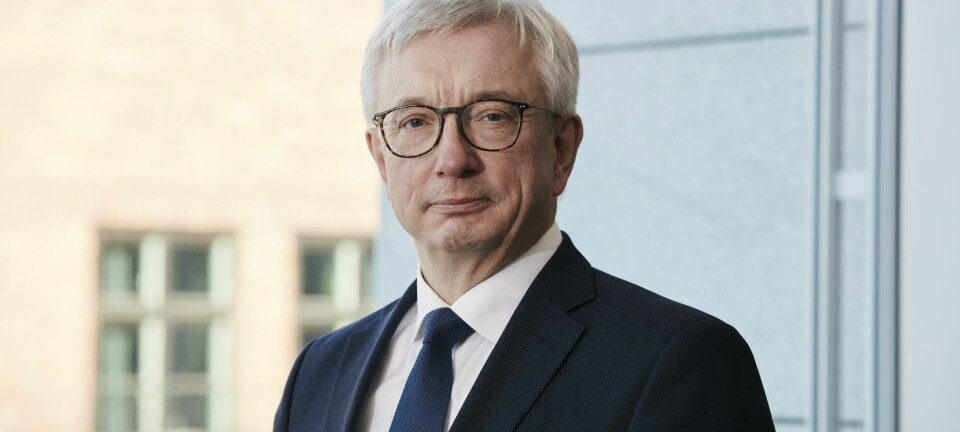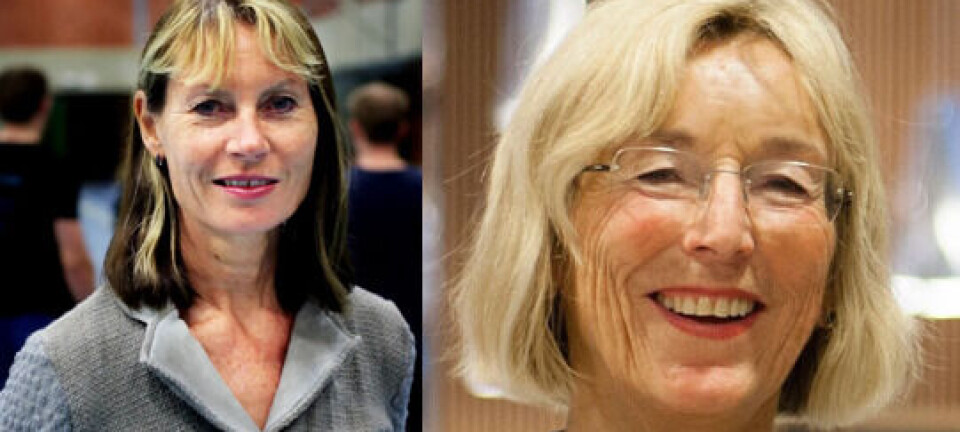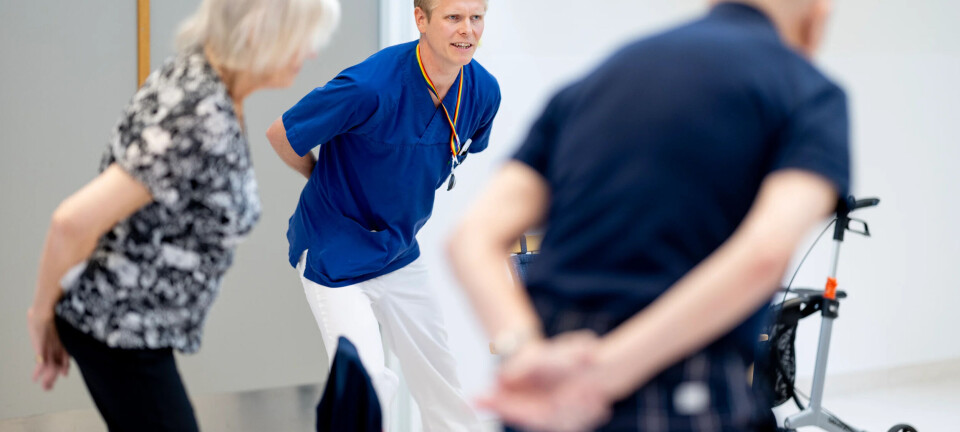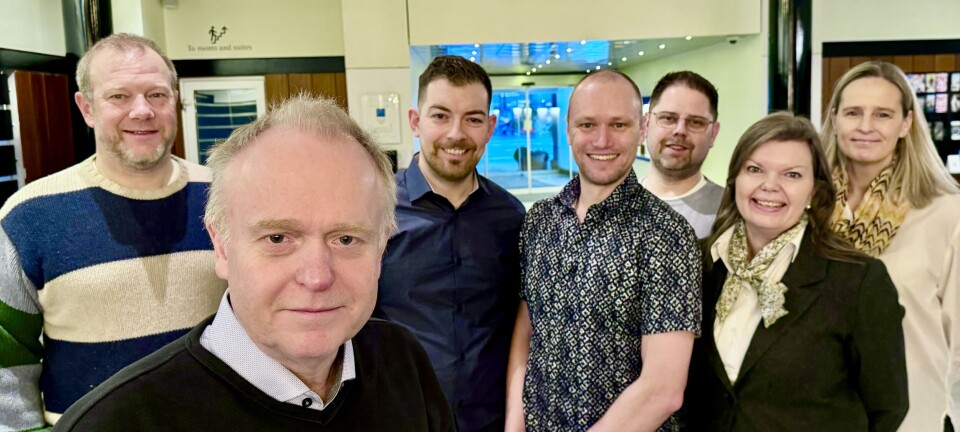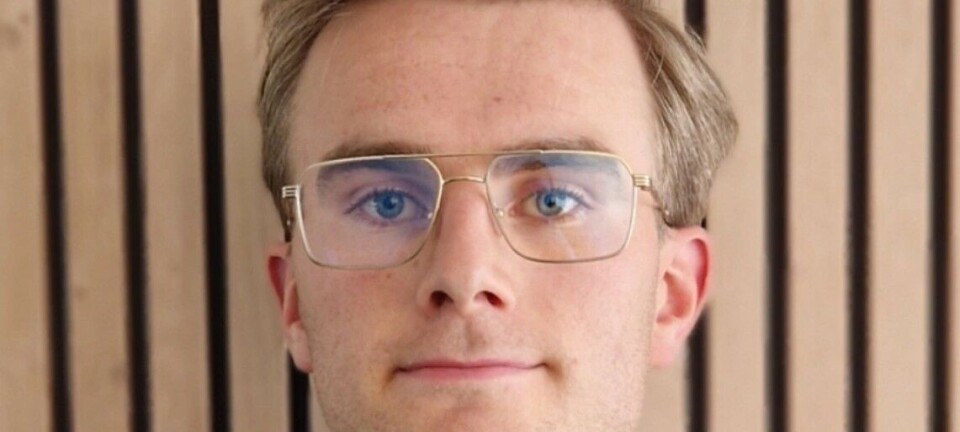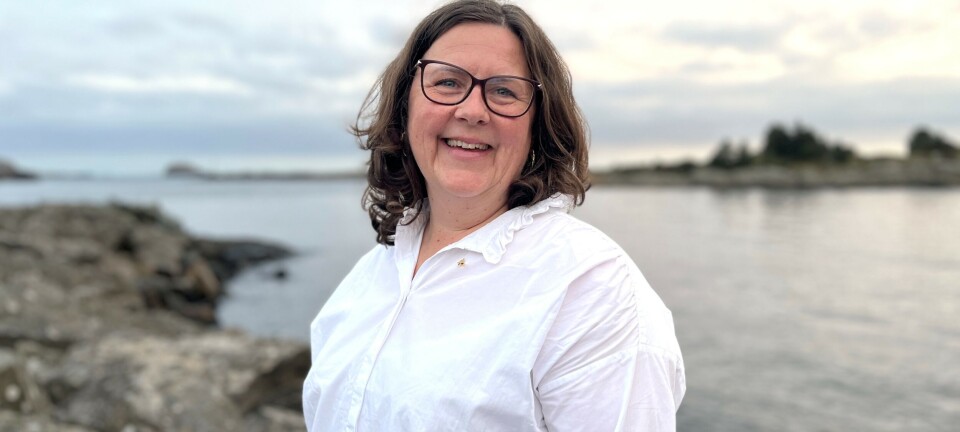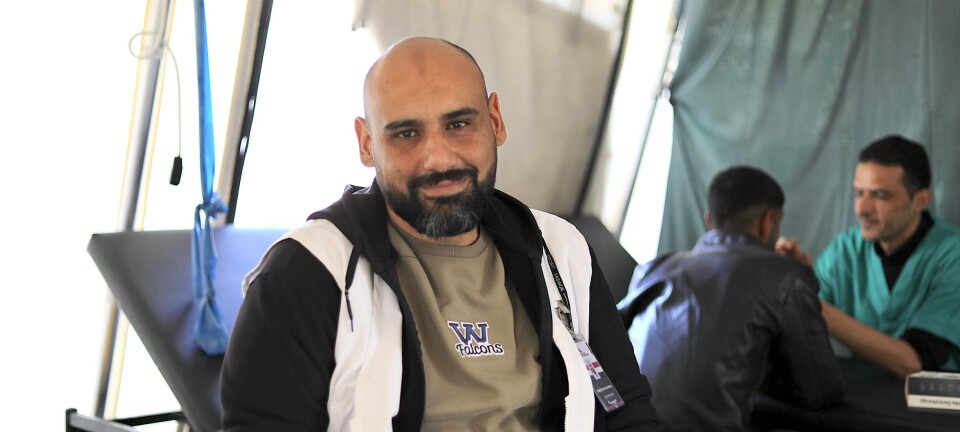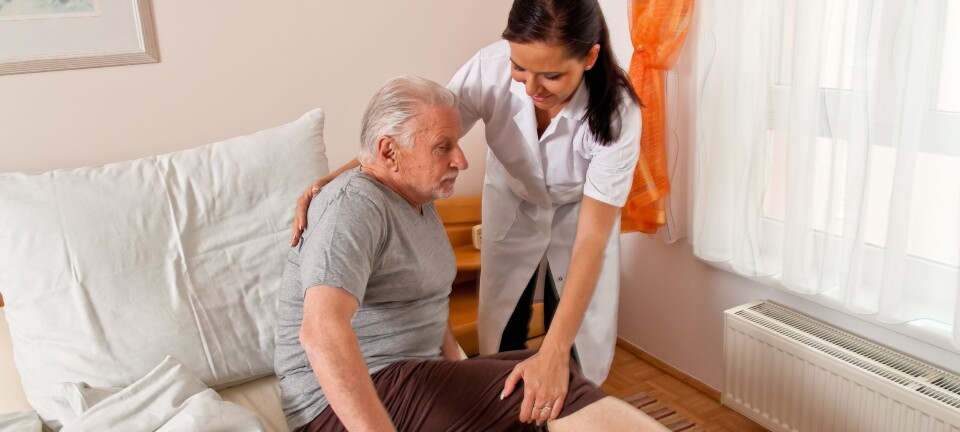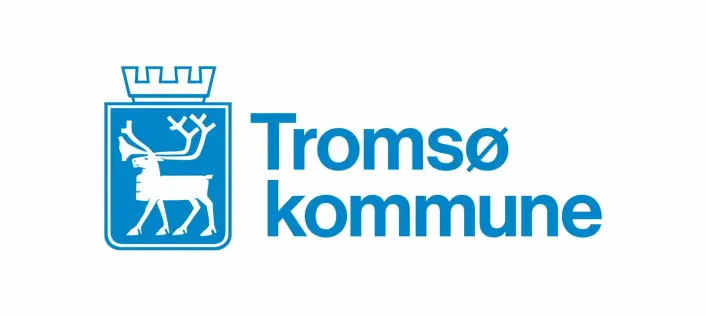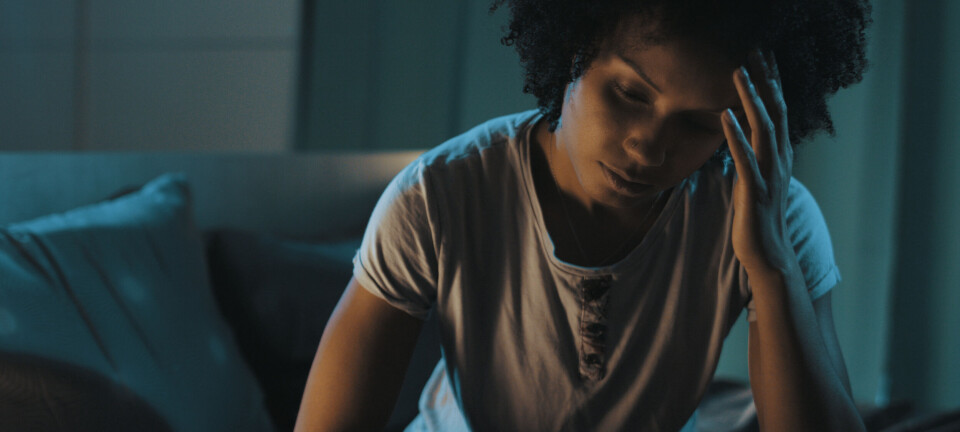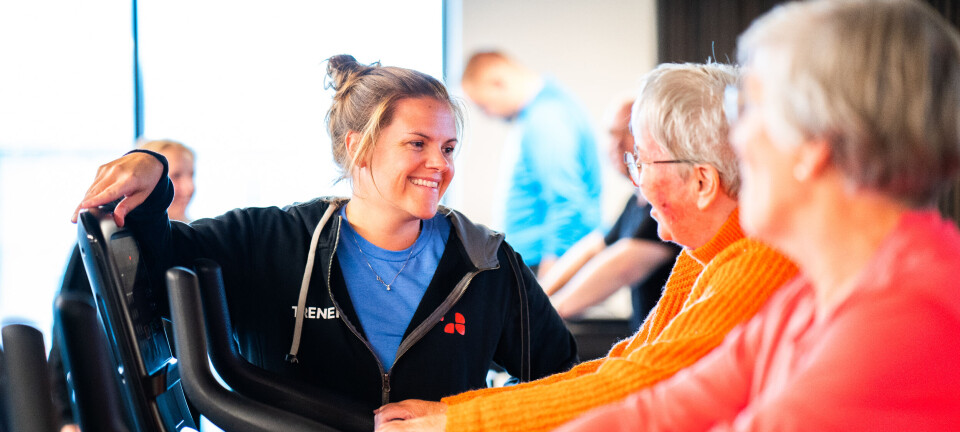Fysioterapi etter hjerneslag - hvorfor og hvordan?
Vitenskapelig artikkel i Fysioterapeuten nr. 3/2008
Pdf av artikkelen her
Artikkelen er direkte dobbeltpublisering av Background og gjengir konklusjoner fra studiene i avhandlingen: Langhammer B. Physiotherapy after stroke a lifetime endeavour. Doktorgradsavhandling. Oslo; Universitetet i Oslo, 2007. Tilgjengelig på: http://wo.uio.no/as/WebObjects/theses.woa/wa/these?WORKID=66772
n
Sammendrag
Denne engelske artikkelen gjengir bakgrunnskapittelet og oppsummerer fire artikler i en doktoravhandling ved Universitet i Oslo. Slag konstanteres å være tredje hyppigste dødsårsak i Norge. Videre angis fysioterapi å være en allment akseptert måte å bidra til økt funksjon hos pasienter etter slag. Likevel mangler det dokumentasjon for å velge mellom ulike fysioterapitilnærminger og for å vite langtidseffekt av behandling for slagpasienter. Tre artikler (I, II og IV) betrakter derfor effektene av fysioterapibehandling over tid, mens en artikkel (III) analyserer sammenhenger mellom funksjonelle variabler. I den første artikkelen, basert på et randomisert kontrollert forsøk, indikerer forskerteamet at fysioterapi basert på oppgavefokuserte strategier gir bedre funksjon enn fysioterapi basert på fasciliterings- og inhiberingsstrategier for pasienter i akutt intensivbehandling. Den andre artikkelen er en oppfølging av samme studie. Konklusjonen er at det ikke synes å være effekt av noen av fysioterapiformene ett og to år etter at pasientene fikk slag. Den tredje artikkelen rapporterer om sterk sammenheng mellom statisk og dynamisk balanse og seks minutters ganglengde hos pasienter med slag etter opphold på en slagbehandlingsenhet. Studien indikerer at statisk og dynamisk balanse trenger å trenes på lik linje i akutt fase og at balansetrening trenger å ses i relasjon til oppgaven som utføres. Artikkel fire er basert på en randomisert kontrollert studie. Denne studien indikerer at regelmessig trening det første året etter hjerneslag er nødvendig for å oppnå og opprettholde god motorisk funksjon. Resultatet indikerer også at å følge opp på konsultasjonsbasis er like effektivt som obligatorisk trening tilrettelagt hos fysioterapeut.
Abstract
This English article present the background of and summarizes four articles in a doctorial thesis from the University of Oslo. Stroke is classified as the third most frequent cause of death in Norway. Physiotherapy is generally accepted as a means of increasing motor function for patients after a stroke. Nevertheless, little research has so far been done on the different physiotherapy approaches and on ascertaining the long term effect of treatment for stroke patients. Three articles (I, II and IV) consider the effects of physiotherapy treatment over time, while one article (III) analyses the correlation between functional variables. In the first article, based on a randomized controlled trial (RCT), the research indicates that physiotherapy with task-focused strategies gives better function than physiotherapy with facilitation and inhibition strategies for patients in acute care. The second article is a follow up of the same study. It concludes that the two physiotherapy treatments seem to have little or no effect one or two years after a stroke. The third article reports a strong correlation between walking and both dynamic and static balance in acute rehabilitation of patients with stroke. The study indicates that static and dynamic balance need to be addressed equally in early rehabilitation of stroke patients, and that balance functions and tasks are so closely related so they need to be addressed together.
The fourth article is based on an RTC investigating the effect of compulsory intensive physiotherapy training during four periods versus treatment when needed during the first year after first-time-ever stroke. The overall results of this study were positive, indicating that a more intensive follow-up programme during the first year after stroke is highly favourable. Further they indicate that a follow-up programme on a consultative basis is as beneficial as a compulsory exercise programme.
Introduction
Stroke is defined as «rapidly developed clinical signs of focal (or global) disturbance of cerebral function, lasting more than 24 hours or leading to death, with no apparent cause other than vascular», as defined by the World Health Organization (WHO) (1). Transitory ischemic attacks (TIA) are brief attacks of cerebral dysfunction of vascular origin in which the symptoms disappear within 24 hours. Eighty-five percent of all strokes are caused by thrombosis or embolus, 10% are caused by haemorrhage and 5% by subarachnoid haemorrhage (2).
Men are more likely to have a stroke than women, but this trend is reversed after the age of 85 years. In addition, the incidence increases with age and 70% of all patients with stroke are over 70 years of age (3, 7).
Stroke is the third cause of death in Norway. However, there has been a reduction in deaths in the last decades, resulting in a higher prevalence (4, 8) (Fig. 1). That is, lethality has gone down in patients aged
Stroke units have been established during the last decades, starting in the 1980s, with the aim of giving patients with stroke maximal care. Stroke units are defined as interdisciplinary stroke teams including specialist physicians, nurses, occupational therapists, physiotherapists, speech therapists and social workers in the acute hospital, organised as a ward or a mobile team in charge of patients with acute stroke (10). It is recognised that stroke units improve and hasten the rehabilitation of patients and it would be preferable that all patients with stroke could have access to this form of care (2, 11-14). In 2005 51% of all patients with stroke were admitted to the 48 existing stroke units in Norway (15-16). In comparison, Sweden has 80 stroke units and 73% of all patients with stroke are treated in these units (9).
Stroke units in combination with the development of National Stroke Registers have led to improved stroke care. The National Stroke Registers target and register quality of treatment and lack of treatment of patients with stroke, contributing to easily accessible information and knowledge about stroke (11). A national register is currently under development in Norway with its centre in Trøndelag (17).
National guidelines have been introduced in order to standardise and improve stroke care in several countries, e.g. Sweden, Australia, USA, Canada and England, to mention a few (18-20). The guidelines are based upon and developed according to evidence-based medicine, thereby providing recommendations for the best up-dated treatment and rehabilitation, which should warrant the quality of treatment for stroke patients. The national guidelines are the basis for clinical guidelines and these are developed locally to support clinicians in their daily practice. Clinical guidelines are defined as «systematically developed statements which help the practitioner and patient to make decisions about appropriate health care in specific circumstances» (21).
Recovery after stroke
Recovery after stroke is influenced by both intrinsic and extrinsic factors. A brain lesion affects both the anatomy and the physiology of the nervous system. The size of the brain lesion has the greatest impact on neurological recovery in both animal and clinical research studies (22- 23). All living organisms have an inherent capacity to self-organize throughout life and so recovery can be categorized as spontaneous, due to reparative processes, and due to reorganization of neural mechanisms, influenced by use and experience (24).
Spontaneous recovery probably represents the return to function of undamaged parts of the brain through resolution of local factors like oedema and the absorption of necrotic tissue debris and opening of collateral channels for circulation to the lesion area (25-26). This development is rather short in time, 3-4 weeks, and further recovery is explained by other mechanisms which underlie what is called brain plasticity, that is reorganization of neural mechanisms. Brain plasticity includes unmasking of pathways previously functionally inactive, sprouting of fibres from surviving nerve cells with formation of new synapses and redundancy in neural circuitry, i.e. multiple parallel pathways sub serving similar function (27-29). This plasticity is thought to be driven by experiences, mobility, activity, interventions and the physical features of environment and its demands (24-32). Physiotherapy intervention can be said to be a driver of these plastic and dynamic changes with its focus on mobility and activities (33-35).
Patients who do not receive in-patients care could be seen as example of «spontaneous recovery». A study, which focused on patients with stroke that had not been admitted to hospital, concluded that; «Stroke patients not admitted to hospital have significant levels of disability which does not change substantially in the year after stroke» (36). The result of this study would indicate the importance of «drivers» of reorganization of neural mechanisms.
Factors that have been identified as valid predictors of recovery after stroke are admission ADL score (37-41), urinary incontinence (37-38, 41-43), degree of motor paresis or paralysis (37-38, 43), age (37-41), loss of consciousness within the first 48 hours after stroke (37, 43), disorientation in time and place (37, 44-47), sitting balance (37-38, 41, 46), status following recurrent stroke (37, 40-41, 46, 48), level of perceived social support (37, 46-47) and metabolic rate of glucose outside the infarction area in hypertensive patients (37, 49). The methodological heterogeneity of many of these studies has been commented on by Jongbloed, who points out that; «It is important to identify factors that predict which patients have greater (or less) than predicted recovery. If interest lies with the prediction of function, at a particular point after the stroke, function should not be measured at discharge, since length of hospital stay varies enormously, but at a set time post stroke» (50).
Predictions can also be made regarding the pattern of brain activation (26). It has been shown that in patients with smaller injuries to the brain the ipsilateral hemisphere is activated to a greater extent (22). That is, a greater injury is associated with reduced laterality of brain activity (32, 51-52).
Chronic stroke
Approximately 70-80% of all patients with stroke survive one year after the onset. The mortality rate thereafter is approximately 10% every 6 months (53). Fifty percent of the patients who survive a stroke display little or no reduction of function 28 days after the onset of symptoms, 20% of the survivors have a major disability and 30% a moderate disability in need of care, treatment and rehabilitation in the same period (54). Fifty percent of the patients with stroke report lower quality of life and 20-40% depression and anxiety between 6 months and 7 years post-stroke (55-59).
Secondary complications in chronic stroke
Secondary complications are not caused directly by the stroke, but occur as a result of loss of function in one of the systems. Many patients with stroke experience secondary complications due to paresis/paralysis, reduced sensation, aphasia and apraxia (60-63).
In a study by Langhorne et al (60) approximately 85% (n=311; 161 male, 150 female; mean age 76 years) of hospitalized patients with stroke experienced some form of secondary complication (Table 2).
Inactivity as an indirect cause of stroke often leads to reduced endurance and strength (70- 75), which might be considered secondary complications. Reduced endurance and strength will in the long run directly affect the levels of activity and participation (76).
The differentiation between impairments directly related to stroke and secondary complications that arise as a result of such impairments can be diffuse. This in turn might lead to difficulty in discriminating between improvements of directly stroke-related impairments and reduction of secondary complications in chronic stroke patients. Some of the improvements in function that occur a long time after the stroke incident may well be explained by reduction of secondary complications, such as inactivity leading to reduced endurance, reduced strength, reduced balance and reduced mobility, to mention some (77).
Classification of functioning, disability and health
The World Health Organization (WHO) has developed the International Classification of Functioning, Disability and Health (ICF) to provide a unified and standard language and framework for the description of health. WHO has defined health as a state of complete physical, mental and social well-being and not merely the absence of disease or infirmity (World Health Organization, World Health Organization Constitution, Basic Documents Geneva:WHO 1948) (78). The domains in ICF are health domains or health-related domains and are described in the perspective of the body, the individual and society in two lists: (1) body function and structures and (2) activities and participation (Fig. 2) (79).
Functioning is an umbrella term encompassing all body functions, activities and participation. Similarly, disability serves as an umbrella term for impairments, activity limitations and participation restrictions. ICF also lists environmental factors that interact with all these constructs.
Impairments, activity limitations and participation restrictions
Several body functions and structures may be impaired after stroke. These impairments may result in activity limitations and/or participation restrictions. Some common impairment is impaired motor function, sensory and perceptual deficits, impaired balance, cognitive limitations, aphasia and depression (39, 44-45, 48, 80-129).
Impairments after stroke
Motor function
Paralysis and/or weakness of one side of the body, i.e. hemiplegia or hemiparesis, are the most commonly reported impairment after stroke (80-82). Motor deficits in patients with first-time-ever stroke have been reported to be present in 77% in the upper limb and 72% in the lower limb (248). In the acute stage this weakness is caused by a disrupted neuro-muscular connection. In the chronic stages a secondary muscular weakness and atrophy in the functioning muscles may also be due to disuse (72-75, 80-82).
Tone The upper motor neuron syndrome has been described as consisting of both negative and positive features (83-87). Negative features are decreased tone with signs of flaccidity-muscle weakness; slowness of muscle activation; and loss of dexterity. Positive features include increased tone which may lead to the development of spasticity (hyper- excitability) and resistance to passive movement (hyper tonicity). It has been recognised that increased muscle tone is due not only to increased reflex activity, but also to intrinsic changes of the muscles (83), and thus Carr and Shepherd extended the description of positive and negative features by introducing the expression adapted features (84). Adapted features are a result of the positive and negative features, and are manifested clinically as muscle and connective tissue changes and altered motor patterns (24, 83). It is proposed that after three months a possible increase in resistance to passive stretch is mostly due to intrinsic changes of the muscle (83).
The prevalence rates of spasticity in patients with first-ever stroke 3 and 12 months post stroke have been reported to be as low as 19% and as high as 38% (69, 86). It has been suggested that spasticity may contribute to impairment of movement function and to limitation of activity, but it seems to have a less pronounced effect on health-related quality of life (HRQL) (87).
Incontinence Urinary incontinence can affect 40-60% of people admitted to hospital after a stroke, with 25% still having problems on hospital discharge and about 15% remaining incontinent at one year (88-90). Some reported prevalence rates of post-stroke faecal incontinence in stroke survivors are 30% (7 to 10 days), 11% (3 months), 11% (1 year), and 15% (3 years) (91).
Sensory function
Vision is an important modality for postural control and movement (92-95). Homonymous hemianopsia is a common symptom in stroke. In a retrospective study of patients with homonymous hemianopsia medical records were screened over the period 1989 to 2004. A total of 904 cases of this visual condition were found and of these, 629 (70%) had a diagnosis of stroke. It was concluded that stroke was the most common cause of the syndrome (96).
Somatosensory impairment is reported in up to 60% of patients with stroke (97-99). Somatosensory modalities include light touch, vibration, temperature and proprioception. Reports suggest that somatosensory impairments are linked to poor spontaneous use of a limb, particularly the hand, which may lead to deterioration of the function related to hand movement (99-100).
Pain In a recent study in 297 patients with stroke, moderate to severe pain was reported by 96 (32%) of these patients after 4 months. At 16 months, only 62 patients (21%) had moderate to severe pain, but the pain intensity was more severe. The pain was persistent in 47%, disturbed sleep in 58%, and required rest for relief in 40% of the patients (54, 66, 88). Pain after stroke is perhaps a neglected issue (101).
Shoulder pain occurrence among patients with stroke varies, with a reported frequency of 5 84 % (65, 102). Hemiparetic shoulder pain has been associated with weakness, immobility, abnormal muscle tone, glenohumeral subluxation and somatosensory impairments of the upper limb (65-66, 102).
Mental function
Impaired consciousness after stroke is a negative sign which is present in about 20% of patients and is closely related to high mortality (44,104).
Emotional symptoms Thirty to 40% experience depression and anxiety (46, 106-108).
Perceptual deficits are fairly common; 26-52% exhibit neglect (45, 59) and apraxia has been observed in 28% of all patients with a left hemisphere lesion staying in rehabilitation centres and 37% in nursing homes (105).
Communication Impaired function of speech muscles may result in dysarthria which is reported to be present in 20-40% of patients with acute stroke (109). Aphasia is defined as a disorder or loss of speech and language abilities caused by a brain injury. It is estimated that 20-38% of patients with stroke suffer from aphasia in the acute stage, but this figure is reduced to 12-18% six months after stroke (110-111).
Oral apraxia has been observed in 6% of 618 patients with stroke, 9% of those with a left and 4% of those with a right hemisphere lesion (112).
Impaired balance impaired postural control
Human balance is an operational construct, most often referring to the ability of a person not to fall. A mechanical definition of equilibrium is the state of an object when the resultant load (forces or movements) acting upon it is zero (Newtons first law) (113). The position of the centre of mass (COM) or centre of gravity (COG) in relation to the base of support (BOS) is highly related to the static balance. In humans muscular activity is a mechanism used to counteract the forces of gravity and acceleration. This is known as postural control.
Postural control can be defined as the act of achieving, maintaining or restoring a state of balance during any posture or activity (93). In order to meet biomechanical challenges of tasks and environment, the postural control system needs adequate sensory input, efficient central processing and an effector system of afferent nerves, muscles and joints (114-115). Postural control strategies may be proactive, reactive, predictive, or a mixture of all three (93).
The main cause of balance disturbances after stroke is the lesion in the central nervous system (CNS), which affects information processing, integration of sensory input, and the effector pathways (93). Impairments with a negative impact on balance are disorders of the vestibular system (47, 93) and vision (94-96, 115), muscle weakness (93, 95), reduced muscle tone (93, 115), loss of range of motion (93) and impaired proprioception (93, 115). Prevalence rates of impaired balance after stroke have not been reported, but if balance is seen in conjunction with motor deficits, affecting postural control, a prevalence of approximately 70% can be assumed in patients with stroke, but this is pure speculation (248).
Activity limitations after stroke
There is no internal hierarchical order of affect between impairments, activities and participation. Impairments after stroke may lead to activity limitations. On the other hand, patients with impairments may well be able to carry out activities and participate in all major areas in society and life. Independence in activities does not rule out the possibility of participation problems or problems due to environmental or personal factors (116).
Areas of activity where limitations might arise after stroke are defined by WHO/ICF as learning and applying knowledge, general tasks and demands, communication, mobility, domestic life and self-care (116-117).
Mental impairments and communication difficulties may influence learning/application of knowledge or general tasks/demands, or all of these, which might lead to both direct and indirect limitations of activities (118-119).
Mobility limitations such as transfer, gait and stair-walking difficulties can be major problems after a stroke (120-121). In a recent study by van Wijk et al, it was concluded that although many patients that survive a stroke achieve some form of independence in ambulation, few attain the same level of velocity and distance as their healthy counterparts of the same age (48). In the same study, however, it was found that the level of mobility attained during inpatient rehabilitation remained stable in the majority of patients with stroke over the second year after the onset (48). Only 12% showed a decline in mobility, and depression was the only predictor of decline.
Dependence in activities of daily living (ADL) is reported to be highest immediately after a stroke, but is decreased one year post-stroke (39). It is generally agreed that the ADL improvements in most stroke patients are maximal within six months (122-123). However, there is a high risk of functional decline after the post-acute rehabilitation period (124-125). Functional decline in patients with stroke living in the community has been reported to be largely dependent on the clinical characteristics of the patient in question. Three of four analysed concomitant disabling conditions were associated with functional decline. These were pressure ulcer, urinary incontinence and hearing deficit, all of which can be prevented and possibly treated or modified, in contrast to the fourth condition, cognitive decline, which cannot.
Participation restrictions after stroke
It has been suggested that the participation domain may represent complex categories of «life behaviour» (126-127). The degree of participation is complex. Participation is conceived as a dynamic complex interaction between an individuals health condition, body functions, activities and external factors representing the circumstances in which the individual lives. It is related to quality of life (QoL) and is dependent upon environmental influences, as assessed in the community by self or proxy report, and the focus is on patients and caregivers.
Participation involves the concept of autonomy, although the patient may not have to carry out the activities themselves. It also includes personal goals and social roles, and not only performance-based indicators such as upper and lower extremity function (128).
Restrictions in participation after stroke may refer to the degree to which the patient perceives that the disabilities after stroke restrict his or her ability to resume the pre-stroke roles that he/she had before the stroke (129). The restrictions vary, but they are connected with all levels of ICF (130). Jette et al. found three distinct concepts within the concept of physical functioning which they identified as conforming to the dimensions of Activity and Participation as proposed in the ICF. These distinct, interpretable factors which together accounted for 61.1% of the variance in participation were labelled: Mobility Activities (24.4%), Daily Activities (24.3%), and Social/Participation (12.4%) (126). Functional disability and mood disorders may independently contribute to restricted participation of patients post-stroke (129).
Only few studies have addressed participation restrictions in patients that survive a stroke, using the ICF framework. Studies dealing with the social impact of stroke have focused on QOL and have shown that restrictions in participation and depression are related to a reduced QOL, while social support can enhance QOL (131).
Studies of Instrumental Activities of Daily Living (I-ADL), which also reflect the participation level, have shown that stroke patients are to a great extent dependent upon relatives (132), that I-ADL are related to leisure activities (133), and that being male, unmarried, of high age, having severe motor impairment, having poor communication ability, and ADL dependency can be predictors of social inactivity 12 months post-stroke (129).
Environmental factors effects on outcome after stroke
In animal research there is growing and convincing evidence confirming the role of an enriched environment in improvement of function (31, 134). This is very likely to be transferable to human beings and patients with stroke, in particular (135-137). In preliminary studies with the aim of leading to a definition of ICF Core Sets for stroke, 64 environmental factors were identified (116). Another study showed that ICF factor e399 (unspecified support and social network), under chapter e3, support and relationships, was the environmental factor of the ICF cate-gories that was most used (117).
Personal factors effects on outcome after stroke
Personal factors are not classified by the ICF because of social and cultural variations, which can make it difficult to interpret such factors with a global perspective. Personal factors, however, for example age, gender and hereditary characteristics, may have an impact on the stroke outcome. All these three are influential factors, but are impossible to alter or modify (37, 133).
Physiotherapy definition
The 14th general meeting of the World Confederation for Physiotherapy (WCPT) adopted the following description of the profession. «The nature of physical therapy is providing services to people and populations to develop, to maintain and to restore maximum movement and functional ability throughout the lifespan. Physical therapy includes the provision of services in circumstances where movement and function are threatened by the process of aging or that of injury or disease. Full and functional movements are at the heart of what it means to be healthy». Furthermore: «The nature of the physical therapy process is the service only provided by, or under the direction and supervision of a physical therapist and includes assessment, diagnosis, planning, intervention and evaluation» (Description of physical therapy adopted by the 14th general meeting of the World Confederation for Physical therapy (WCPT) May 1999, adapted final version at the extraordinary general meeting June 2003). The same general meeting decided that physical therapy and physiotherapy should be used as synonymous terms to identify the profession. Physiotherapy will be the preferred term used throughout this thesis.
Conceptual framework for clinical practice
Shumway-Cook and Wollacott introduced four key elements that they suggest will contribute to a comprehensive conceptual framework for clinical practice of physiotherapy (92). These elements are:
1) The clinical decision-making process. This includes gathering of information essential to the development a plan of care compatible with the problems and needs of the patient; a plan consisting of assessments, analysis of assessments, development of short- and long-term goals, development of a treatment plan, implementation of the treatment plan and re-assessment of the patient and treatment outcome.
2) Hypothesis-oriented clinical practice. This involves systematic testing of assumptions about the nature and cause of motor control problems, and reflects the theories of a clinician regarding the cause and nature of function and dysfunction in patients with neurological disease.
3) A model of disablement, which imposes an order on the effects of disease and enables the clinician to develop a list of problems towards which treatment can be directed. An example of such a model is the WHO International Classification of Function, Disability and Health.
4) A theory of motor control, involving assumptions about the cause and nature of normal and abnormal movement, and include for example reflex-based neurofacilitation approaches or system-based task-oriented approaches.
Motor control
Rehabilitation practices reflect our basic ideas about the cause and nature of function and dysfunction (138-139). Motor control theory is part of the theoretical basis of clinical practice. A theory of motor control is defined as an idea of the nature and cause of movement (92). It deals with stabilization of the body in space, as this applies in postural and balance control, and with moving the body in space, as this applies to movement (92, 138-139). Motor control is usually studied in relation to specific actions or activities.
Theories of motor control
Different theories of motor control have been proposed throughout the years as researchers have added new knowledge to the understanding of the central nervous system, e.g. the reflex theory, the hierarchical theory, motor programming theories, the systems theory, the dynamic action theory, the parallel distributed processing theory, task-oriented theories and the ecological theory (92). A theory of motor control was presented by Shumway-Cook and Wollacott as a systems approach (140). This theory defines movement as an interaction between the individual, the task and the environment, where movement is the result of a dynamic interplay between perceptual, cognitive and action systems. Action systems are defined as the neuromuscular aspects and the physical/dynamic properties of the musculo-skeletal system itself (92).
Physiotherapy in stroke rehabilitation
Several studies have established that physiotherapy improves motor function and enhances mobility (141-144). Enhanced mobility contributes to recovery, and it may therefore be assumed that physiotherapy after stroke is a promoter of recovery (36, 141-144).
Different physiotherapy approaches have been introduced over the years. Some methods are based on reflex and hierarchical theories of motor control such as the model of Rood (145), the proprioceptive neuromuscular facilitation (PNF) technique (146) and models developed by Brunnstrøm (147) and the Bobaths (148). Others, such as the systems approach (92) and the Motor Relearning Programme (MRP) (84), rely on recent theories of motor control and principles of neural plasticity (24, 84, 92, 149-156). Although all physiotherapy approaches improve motor function in one way or another, there is evidence to indicate that a systems approach is more favourable than reflex-hierarchical methodology in the acute treatment of stroke (143-144).
The improved function in the early stages of stroke is not self-supportive, but will degenerate, if not maintained (61, 124). Several studies have shown a reduction of motor and ADL function post-stroke when rehabilitation has been terminated (61,124-125).
Several studies indicate that what is practised is the function that is learned and improved; e.g. strength training with weights and aerobic exercise training improve strength and endurance, respectively, but do not automatically lead to an improvement in walking ability or more independence in ADL activities (157-166), or contribute to a higher degree of movement representations in the cortex (149 - 153).
Exercising «task activities» such as walking for example, on the other hand, can contribute to increased strength in leg muscles, increased endurance and increased representation in the cortex (76, 82, 161-164). However, these activities need to be exercised with a certain intensity, variability and repeatability according to general training principles in order to give measurable results (149-156, 165-166). This supports the overall impression that a system- based approach coupled with application of training principles is favourable both in the acute and long-term rehabilitation of stroke (124,144).
It has been recommended the «global» approaches, a term introduced by Pollock et al, be abandoned because of the problems in describing, defining and consistently applying a complex range of interventions (167). It is probably sound and idealistic advice to concentrate on investigating clearly defined and described techniques regardless of their historical and philosophical origin (167). On the other hand, it must be kept in mind that current neurophysiological research and hypotheses will always be a basis for evaluating physiotherapy methods and techniques, and these theories can also be regarded as global approaches.
The global approaches in themselves are not problematic; the MRP, Bobath, PNF and Brunnstrøm techniques are all successful physiotherapy approaches (84, 146-148). All four methods are clearly documented and presented by their respective creators in books, with references to neurophysiological research that was relevant and up-dated at the time when the approaches were presented. These physiotherapy approaches may be compared to a brand in the marketing business. A certain value/definition is allocated to the brand/global approach and this, if successfully presented, will automatically be identified by all the potential users/therapists. The values and the key concepts of the four approaches mentioned are identified by therapists through the language, methods and philosophies used by the different physiotherapy approaches/«brands».
The problem arises when an attempt is made to change any of these approaches into something new, not realising the strength of the branding the approaches have. Inevitably «old» definitions and documentation cling to the name and for therapists this will create unnecessary confusion. A possible example is a method based on a reflex or hierarchical approach such as that of Bobath, where the therapists keep the basic philosophy and build their treatment on the old values; normal movement, key components, part training and just alter the references to the new neurophysiological research, for example the systems approach, in order to adjust and up-date the method to a changing world. The process may be justified by claiming that this is just a development of a therapeutic approach. In clinical practice this will create unnecessary confusion, as the two approaches have different philosophies, ways and strategies to deal with different clinical problems. Inevitably the physiotherapist will come to a point where he/she has to choose in accordance with her clinical belief, and this is where «branding» and, hopefully, evidence-based practise will have a strong input.
At present, the most frequently applied «global approach» is the systems approach, defined as an interaction between the individual, the task and the environment, where movements are the results of a dynamic interplay between perceptual, cognitive and action systems. In recent years this has been the theory upon which most clinicians have based their understanding of the cause and nature of function and dysfunction in patients with neurological disease (92, 138-139). This is directly related to hypothesis-oriented clinical practice, as presented by Shumway-Cook and Wollacott (92).
A physiotherapist would ideally make use of hypothesis-oriented clinical practice, a model of disablement and a theory of motor control to form the basis of his or her clinical decision-making process in the practice of stroke rehabilitation. The actions in clinical practice and the choices of therapies will uncover any discrepancies between hypotheses, models of disablement, theories of motor control and clinical decision making (92, 138-139). That is: what the therapists say and intend to do and what they actually practise, should ideally be compatible. The model of disablement and theory of motor control should serve as a control, so that the therapist can detect where the discrepancies may lie if the actions in practise do not harmonize with the model (92, 138-139).
Evidence-based physiotherapy in stroke rehabilitation
In recent years evidence-based medicine (EBM) (168) and evidence-based practice have been introduced into practical clinical physiotherapy. Evidence-based practice (EBP) includes the five components assess, ask, acquire, appraise and apply (169). EBP is dependent upon good research on clinical questions for development of clinical guidelines so that the practice at all times is of high standard and up-dated as a consequence of research. «Golden standards» of clinical research are randomised controlled trials, systematic reviews and meta-analyses.
The Cochrane Database of Systematic Reviews is an example of EBM and EBP, and some physiotherapy techniques in stroke rehabilitation are summarised in Cochrane reviews, e.g. treadmill training with or without body weight support (170), promotion of the recovery of postural control and/or lower limb function (167), acupuncture as a treatment of patients with stroke (171), amphetamine treatment on recovery from stroke (172), cognitive rehabilitation for spatial neglect (173), cognitive rehabilitation for memory problems after stroke (174), clinical use of electro-stimulation for neuromuscular re-training (175), and therapy-based rehabilitation services targeted towards patients with stroke living at home (176-177). The general conclusions drawn in many of these reviews are that there is a need for high quality randomised trials and systematic reviews to determine the efficacy of clearly described individual techniques and treatments in stroke rehabilitation.
There have been some good quality randomised controlled trials, however, in recent years (157, 144, 159, 178) that have made it possible to make some changes in clinical practice, and that have led to national guidelines, which in turn may be revised when new research increases our understanding of the rehabilitation process in stroke patients (18-20).
In conclusion, it is generally acknowledged that physiotherapy enhances stroke recovery and that, as mentioned before, a systems approach, defined as an interaction between the individual, the task and the environment, where movement is the result of a dynamic interplay between perceptual, cognitive and action systems, is most beneficial (92, 143-144,154). There is consensus that treatment should start as early as possible, preferably in stroke units with a multidisciplinary team (11-13). However, there is no consensus on who will benefit most from rehabilitation, how intense and how long this rehabilitation should preferably be and how this therapy should be implemented. Furthermore, there is a need to be concise in the description of physiotherapy as applied in stroke rehabilitation, in order to evaluate different treatments and to reduce any discrepancies between what is said and what is being done (179).
Aim
The overall aim of this research was to evaluate the effect of physiotherapy in the acute and chronic stages of stroke in a model of disablement (ICF) and in the light of theories of motor control, and also to assess the influence of dynamic and static balance on gait in the early rehabilitation of patients with stroke.
The specific aims were:
- to compare the effects of two physiotherapy approaches, the Motor Relearning Programme and the Bobath concept, in the acute and sub-acute stages of stroke and to evaluate the long-term effects of these therapies (studies I and II; papers I and II);
- to investigate the association between gait velocity and static and dynamic balance measured by Motor Assessment Scale items 3 (sitting balance) and 5 (walking), Berg Balance Scale (BBS) items 6 (standing blindfolded) and 8 (reaching forward) and the total score of Timed-Up-and-Go test on admission and at discharge from the stroke unit (Paper III);
- to investigate the effect of compulsory intensive physiotherapy training during four periods compared to treatment when required during the first year after first-time-ever stroke related to maintenance of motor function, grip strength, and P- ADL (Paper IV).
Summary of papers
Article I is based on a randomized controlled trial. It indicates physiotherapy with task focused strategies (Motor Relearing Program) to be statistically significant more effective in the short run (≤ 3 months) on therapist registered function than physiotherapy with facilitation and inhibition techniques (Bobath) for patients with acute stroke in secondary care.
Article II is based on a follow up of the same study. It informs that patients received little or no physiotherapy one to two years after stroke. It concludes that non of the two mentioned physiotherapy treatments seems to have long term effects on activity of daily living or motor function.
Article III is based on a correlation study. It reports a strong relationship between walking and both dynamic and static balance in acute rehabilitation of patients with stroke. The study indicates that both static and dynamic balance need to be addressed equally in early rehabilitation of stroke patients. Further, both balance types are so closely related to task (walking, getting up from a chair, turning, and reaching) that they need be handled together with it.
Article IV is based on another randomized controlled trial. The study investigates the effect of compulsory intensive physiotherapy training during four periods compared to treatment when needed during the first year after first-time-ever stroke. The overall results of this study were positive, indicating that a more intensive follow-up programme during the first year after stroke is highly favourable. Further they indicate that a follow-up programme on a consultative basis is as beneficial as a compulsory exercise programme.
Reference
The dissertation is available at: http://wo.uio.no/as/WebObjects/theses.woa/wa/these?WORKID=66772
n
